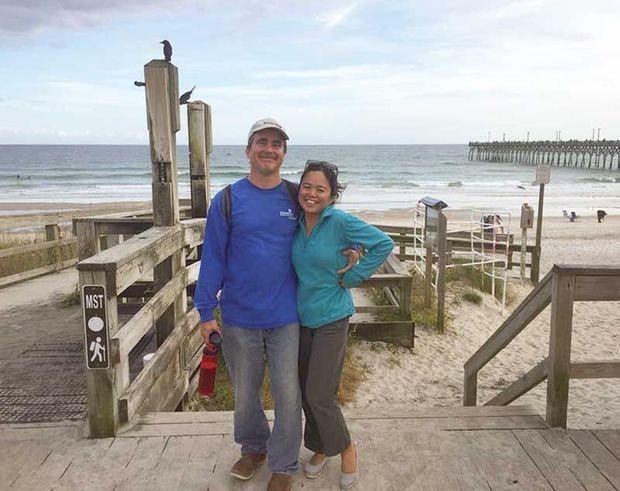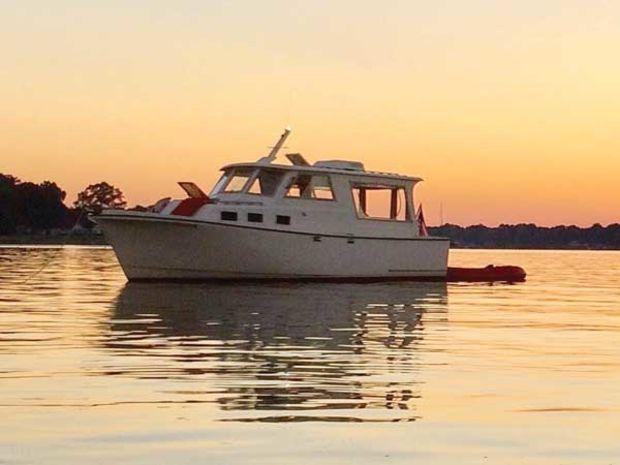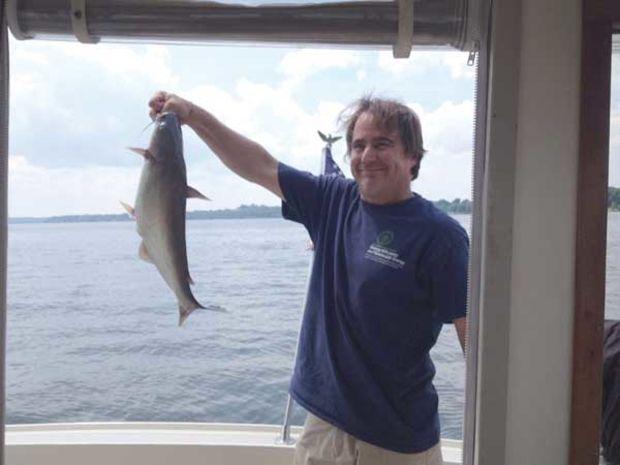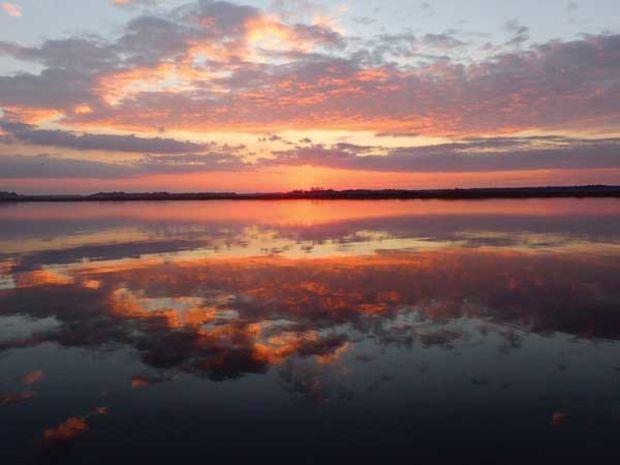Traveling down the ICW for the first time is a big endeavor, but there’s no need to feel you’re going it alone. As David and Sheila McAndrew recently learned, a network of knowledgeable, friendly, and experienced boaters and marine professionals stand ready to help, all along the way.

We caught up with David and Sheila, first-time ICW cruisers, as they were running southbound, more than 500 nm from their home slip on the Little Wicomico River, a tributary that empties into the Bay just south of the mouth of the Potomac, where David grew up boating. While the couple has always owned at least one powerboat, they are new to the cruising lifestyle, having jumped in with two feet in the fall of 2016 with the purchase of their 1986 Albin 27 Mary Jo. Here they share from their point of the view the beginning of their first trip as snowbirds.
Let’s have an adventure
We had spent the past couple winters traveling in Australia and Asia, but after reading an article on the Great Loop, we thought, ‘Hey, let’s have an adventure here.’ Before buying Mary Jo we had never even anchored overnight, so we joined the Marine Trawlers Owners Association (MTOA), and with our membership we’ve learned a lot about cruising.
We left home to make it to an MTOA Southbounders Rendezvous October 17 in New Bern, NC. It was six days by boat. We had to run hard, usually 10 hours per day, which was very tiring. The plan was to go to the event, and then leave the boat and go home to winterize the house and do some striper fishing. However, the long days and sense of urgency didn’t fit well with our goals for the trip, so now we have no schedule or agenda.

Our plan is to keep going south until it gets warm, enjoying the weather wherever we are, and if it gets cold, start moving farther south. The Bahamas is our intended destination, but since this is our first trip down the ICW and the engine sometimes needs nursing, we may not go that far. Using Active Captain and the Mile by Mile guide, we simply plan one to two days ahead. If we like a place, we stay an extra day. We try to run less than six hours a day, or 30-40 miles.
In the company of others
Since leaving, we’ve attended the Hampton, VA, Snowbirds Rendezvous and the MTOA Southbounders Rendezvous. These groups not only provided us with critical information about cruising in general and the trip down the ICW specifically, but they also gave us the opportunity to meet lots of boaters to hook up with during our travels. Cruisers are generally a very social group and always seem willing to welcome people aboard or provide advice or help when needed.
We must have 40 or 50 boat cards from people we can contact as we travel south, all boaters who’ve invited us to dinner or whom we can reach out to if we have a problem. Many are more experienced boaters than we are, and some are MTOA Port Captains: individuals who have committed to helping other MTOA boaters, whether they need a trip to the grocery store or the emergency room. As we travel south we are playing leapfrog with many of the snowbirds we’ve met. We’re finding that when we are docked our social life is much busier than at home. If we make it to the Bahamas, we will rendezvous with some of them there.

In addition to the social aspect, the connections we’ve made have helped us maintain our aging motor. For example, we met a retired diesel mechanic who lives in Myrtle Beach and made plans to go out to dinner together when we stopped in his area. When we met up, we described some engine trouble we were having, and he was able to determine that it was our alternator. Similarly, we have been in contact by phone with a couple of professional service providers that we met through the MTOA Southbounders and Hampton Snowbirds cruisers’ events. Each has spent significant amounts of time on the phone with us, helping us nurse this engine along. That gives us a lot of confidence.
A big trip in a small boat
Before we left we thought navigating the ICW or docking and anchoring the boat in unfamiliar places and strong currents would be the biggest challenges. With half of the ICW behind us those things haven’t really been an issue. Perhaps that is because of the training we received through MTOA and because we are in a relatively small shallow draft boat.
The biggest challenges we have faced are nursing an older boat through so many hours of use and dealing with huge wakes from large power yachts and sportfishing boats. Mary Jo is in good shape, but we have put over 150 hours on her in five weeks. That’s like several seasons of use for most boats. The wake from some of these 60- to 80-foot boats can be six or seven feet. They pick us up, move us sideways and set us down, sometimes knocking out our electronics.

On the other hand, one of the advantages of a small boat is there is always room at our first choice marina, and we can anchor in places the big boats don’t want to go. Although we’re not doing the Loop yet (because for now we like our summers on the Chesapeake), it is something we would like to do someday. For now we are enjoying this adventure, and sleeping at anchor has become our favorite way to sleep!
Interview by Beth Crabtree